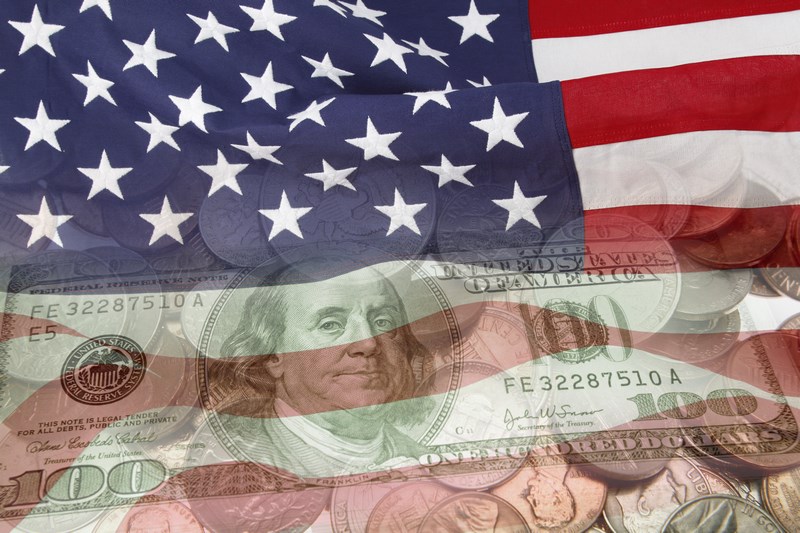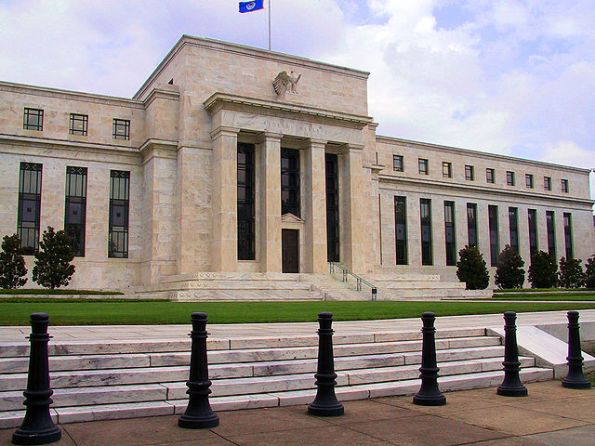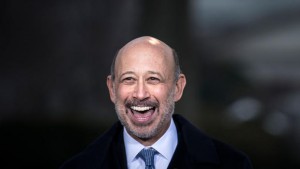 The American financial system is one of the most developed in the world. It has a very extensive banking, insurance, asset management and brokerage firm. It is hard to be surprised at this, as US stock exchanges account for more than 40% of global stock market capitalization.
The American financial system is one of the most developed in the world. It has a very extensive banking, insurance, asset management and brokerage firm. It is hard to be surprised at this, as US stock exchanges account for more than 40% of global stock market capitalization.
The US financial system is very complex and difficult to describe in one article, so we will look at the banking system in the US more closely.
US banking system
The history of banking in the US goes back 200 years. Mainly responsible for its growth are the economic crises that have led to the introduction of regulations aimed at streamlining the system. The first central bank in the United States was First Bank of U. S. founded in 1791, but already after 20 years has been closed. The first legal act regulating the banking system was the National Bank Act passed in 1863. At that time, a system of national banks (including private banks) was established, money was harmonized and national banks were supervised, and the Office of the Comptroller of the Currency (OCC) operated the Treasury Department.
 At the beginning of the 20th century, the Federal Reserve Act was passed in order to rescue the banking system and the Federal Reserve System was established. The Fed was created in 1913, and the country was divided into 12 districts, each with the Federal Reserve Bank. Banks maintained their reserves at the Federal Reserve Bank or its subsidiary in the district. Thanks to the new procedure, the reserves have been distributed evenly throughout the country and not concentrated in one place, as was the case before the regulation was introduced.
At the beginning of the 20th century, the Federal Reserve Act was passed in order to rescue the banking system and the Federal Reserve System was established. The Fed was created in 1913, and the country was divided into 12 districts, each with the Federal Reserve Bank. Banks maintained their reserves at the Federal Reserve Bank or its subsidiary in the district. Thanks to the new procedure, the reserves have been distributed evenly throughout the country and not concentrated in one place, as was the case before the regulation was introduced.
Despite the Federal Reserve system, the banking system has undergone a real cataclysm, and the entire economy has stumbled. In 1929, the bubble burst on the New York Stock Exchange, which was the beginning of the Great Depression, which lasted until 1933 and was probably the biggest economic crisis of the 20th century. As a result of the crisis, more than 1,000 banks collapsed and the Fed did little to prevent it from being a member of the Federal Reserve System.
In June 1933, Congress passed the Banking Act, also known as the Glass-Steagall Act, from the names of its authors. It banned the merger of investment and commercial activities by one bank, and in addition the Act established the Federal Deposit Incurance Corporation – FDIC.
Banks in the United States until the 1990s operated in the Anglo-Saxon system, and it can be described briefly as a banking system in which investment banking is separated from commercial banking. In 1999 Bill Clinton passed a law called Gramm-Leach-Bliley Act (GLBA), called also as the Financial Services Modernization Act. The law abolished the restrictions on merging investment banking with depository and credit and investment banks were given access to the capital accumulated in the form of deposits.
Banks can be divided into state and national. The latter operate on the basis of a federal government permit. These are generally large banks and must be insured in the Federal Deposit Insurance Corporation (FDIC). In addition, they are members of the Federal Reserve System. Some state banks have also opted to join the Federal Reserve System.
The banking system is now one of the more regulated sectors of the economy. As we know from history, this is not an obstacle to the many abuses that are taking place today. Let’s now look more closely at what affects the banking industry and when it’s best to invest in companies in this sector.
When to invest in companies from the financial sector?
 Equities in financial sector companies are particularly sensitive to changes in interest rates. Unlike mining companies, which directly depend on the market situation of raw materials. In the case of companies in the financial sector, and precisely from the banking sector, the dependence on commodity prices occurs, but it is very distant. As is generally known, the rise in commodity prices such as oil, gold, copper, etc. after some time, causes that inflation will increase. Then the rise in inflation will trigger a tightening of monetary policy by the central bank and increase in interest rates. We come to the heart of the matter. The increase in interest rates is aimed at halting credit shares and thus the primary activity of banks. Which means that the profits of banks will begin to decline. What about the fact that the price of the loan offered by the banks will increase as demand will increase.
Equities in financial sector companies are particularly sensitive to changes in interest rates. Unlike mining companies, which directly depend on the market situation of raw materials. In the case of companies in the financial sector, and precisely from the banking sector, the dependence on commodity prices occurs, but it is very distant. As is generally known, the rise in commodity prices such as oil, gold, copper, etc. after some time, causes that inflation will increase. Then the rise in inflation will trigger a tightening of monetary policy by the central bank and increase in interest rates. We come to the heart of the matter. The increase in interest rates is aimed at halting credit shares and thus the primary activity of banks. Which means that the profits of banks will begin to decline. What about the fact that the price of the loan offered by the banks will increase as demand will increase.
However, very low interest rates, which are held too long, can also pose a serious threat to banks. Low interest rates can encourage investors to increase their exposure to investments that would otherwise be considered too risky. There may be so-called booms, for example in the real estate market, which could jeopardize the stability of the entire financial sector when such a boom breaks.
In addition, banks during low interest rates can roll over loans to companies that can not afford to pay off their entire loan because they have been involved in too risky investments but can afford them on a monthly basis. In the short term, banks do not write down these loans at risk, which would reduce their own funds and protect them from bankruptcy. In the long run, however, the number of companies that do not properly restructure is increasing, and as a result blocks new investments and entry into third-party markets.
JP Morgan Chase
JP Morgan Chase was founded by J.P. Morgan & Co., owned by John Pierpont Morgan in 1871. It is currently the largest bank in the United States and the third bank in the world in terms of assets.
The main activities are investment banking, commercial banking, asset management, private banking, brokerage services on the capital market. In 2000, a merger with Chase Manhattan Bank took place, hence the current name of the bank.
Some relevant market data (as of March 2017)
- CEO of the company (from December 2015) – James Dimon
- Number of employees – 243 355
- Headquarters – New York
- Index – DJIA 30, S&P 500, S&P 100
- Shares Outstanding – 3,55 billion
- Float Current – 3,52 billion
- Held by Insiders – 0,28%
- Held by Institutions – 77,43%
- Market Cap – 300,71 billion USD
- Price/Earnings – 13,02
- Price/Earnings for the whole industry – 16
- P/E CAPE Shiller – 18,22
- Over the past 13 years, P/E CAPE Shillera ratio was the highest at 2234,00; the lowest at 9,49; and the median at 15,69
- P/E CAPE Shiller for the whole industry – 23,70
- Revenue for the last year – 107,20 billion USD
- Increase/decrease revenue for the last year – 10,11%
- EBITDA for the last year – N/A
- Net Income for the last year – 25,21 billion USD
- Earnings Per Share for the last year – 6,49 USD
- Increase/decrease earnings for the last year – 9,89%
- Dividend for the last year – 2 USD
- Dividend Yield – 2,37%
- 4 Year Average Yield – 2,44%
Goldman Sachs
 Goldman Sachs, alongside JP Morgan Case, is one of the largest investment banks in the world. It was founded in the 19th century, exactly 1869 by the German Jewish immigrant Marcus Goldman. In 1882 his son-in-law, also of Jewish origin, Samuel Sachs, joined the company, resulting in a change of name to Goldman Sachs. In 1986 Goldman Sachs was established in asset management, and after the collapse of the Soviet Union, the bank became involved in privatization. At present, the main areas of the bank’s business are investment banking, commercial banking, asset management, brokerage services, investment funds.
Goldman Sachs, alongside JP Morgan Case, is one of the largest investment banks in the world. It was founded in the 19th century, exactly 1869 by the German Jewish immigrant Marcus Goldman. In 1882 his son-in-law, also of Jewish origin, Samuel Sachs, joined the company, resulting in a change of name to Goldman Sachs. In 1986 Goldman Sachs was established in asset management, and after the collapse of the Soviet Union, the bank became involved in privatization. At present, the main areas of the bank’s business are investment banking, commercial banking, asset management, brokerage services, investment funds.
Some relevant market data (as of March 2017)
- CEO of the company (from June 2006) – Lloyd Craig Blankfein
- Number of employees – 34 400
- Headquarters – New York
- Index – DJIA 30, S&P 500, S&P 100
- Shares Outstanding – 409,3 million
- Float Current – 370,23 million
- Held by Insiders – 6,92%
- Held by Institutions – 73,6%
- Market Cap – 86,26 billion USD
- Price/Earnings – 13,28
- Price/Earnings for the whole industry – 16
- P/E CAPE Shiller – 13,93
- Over the past 13 years, P/E CAPE Shillera ratio was the highest at 16,66; the lowest at 6,82; and the median at 13,13
- P/E CAPE Shiller for the whole industry – 23,70
- Revenue for the last year – 39,59 billion USD
- Increase/decrease revenue for the last year – 21,77%
- EBITDA for the last year – N/A
- Net Income for the last year – 8,51 billion USD
- Earnings Per Share for the last year – 18,83 USD
- Increase/decrease earnings for the last year – 112,72%
- Dividend for the last year – 3 USD
- Dividend Yield – 1,38%
- 4 Year Average Yield – 1,2%
Summary
Companies in the financial industry are heavily dependent on the situation on the interest rate market. In turn, the situation on the interest rate market depends on the monetary policy pursued by the central bank. The looser the policy, the more the loan is rolled out and the financially better the financial companies are doing. The central bank can use several other tools in addition to controlling the level of interest rates. It may change the reserve requirement ratio, which also has a direct impact on the credit action. It can also use open market operations by buying or selling securities to increase or decrease money supply in circulation. All these central bank actions have a direct impact on the condition of the financial sector, including, of course, the banking sector. In recent years, central banks have gone a step further in loosening monetary policy, maintaining zero interest rates over the years and introducing asset buying programs to increase liquidity in the banking sector. Unfortunately too loose monetary policy can cause speculative bubbles and the involvement of business entities in too risky undertakings.


















